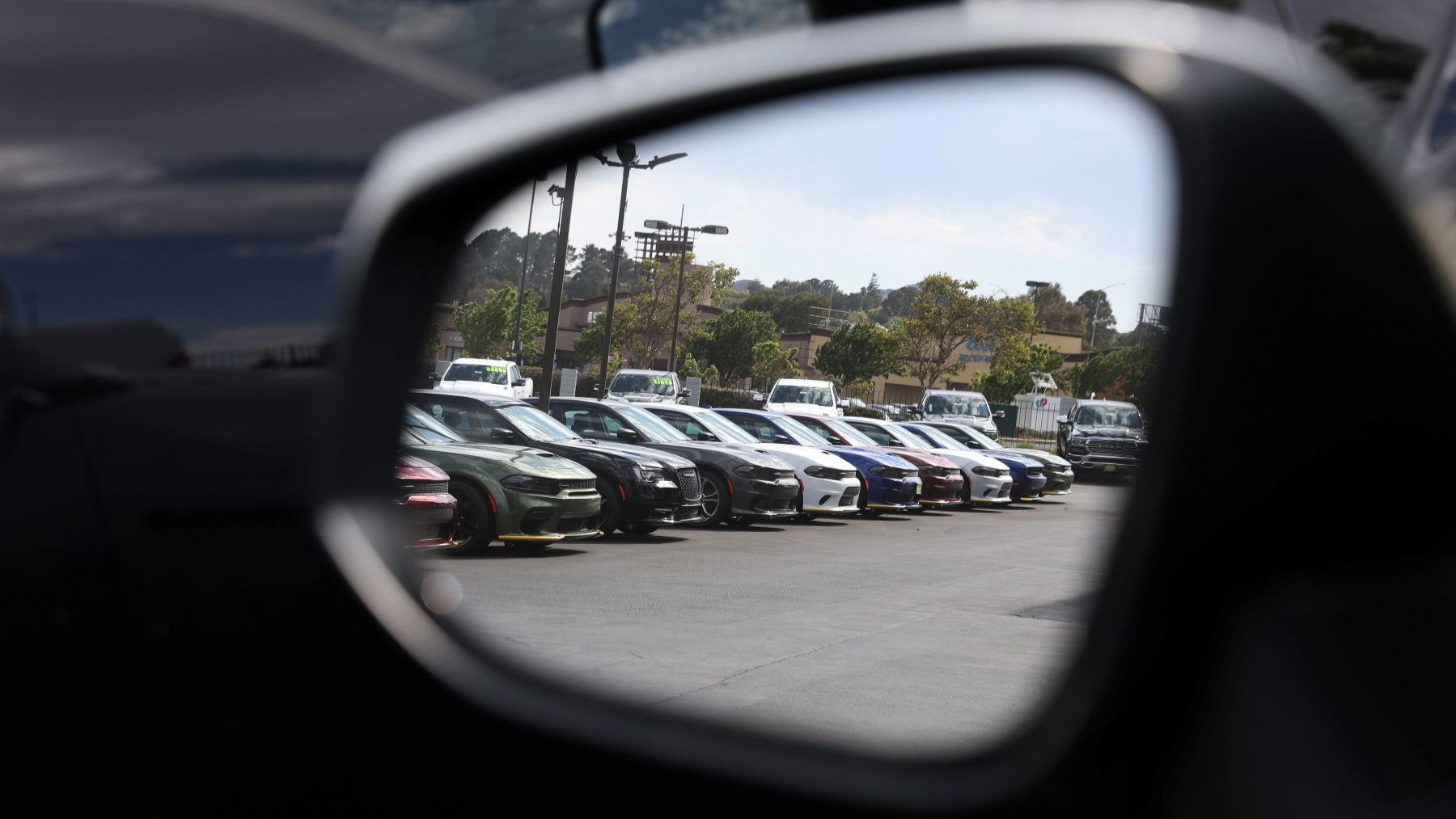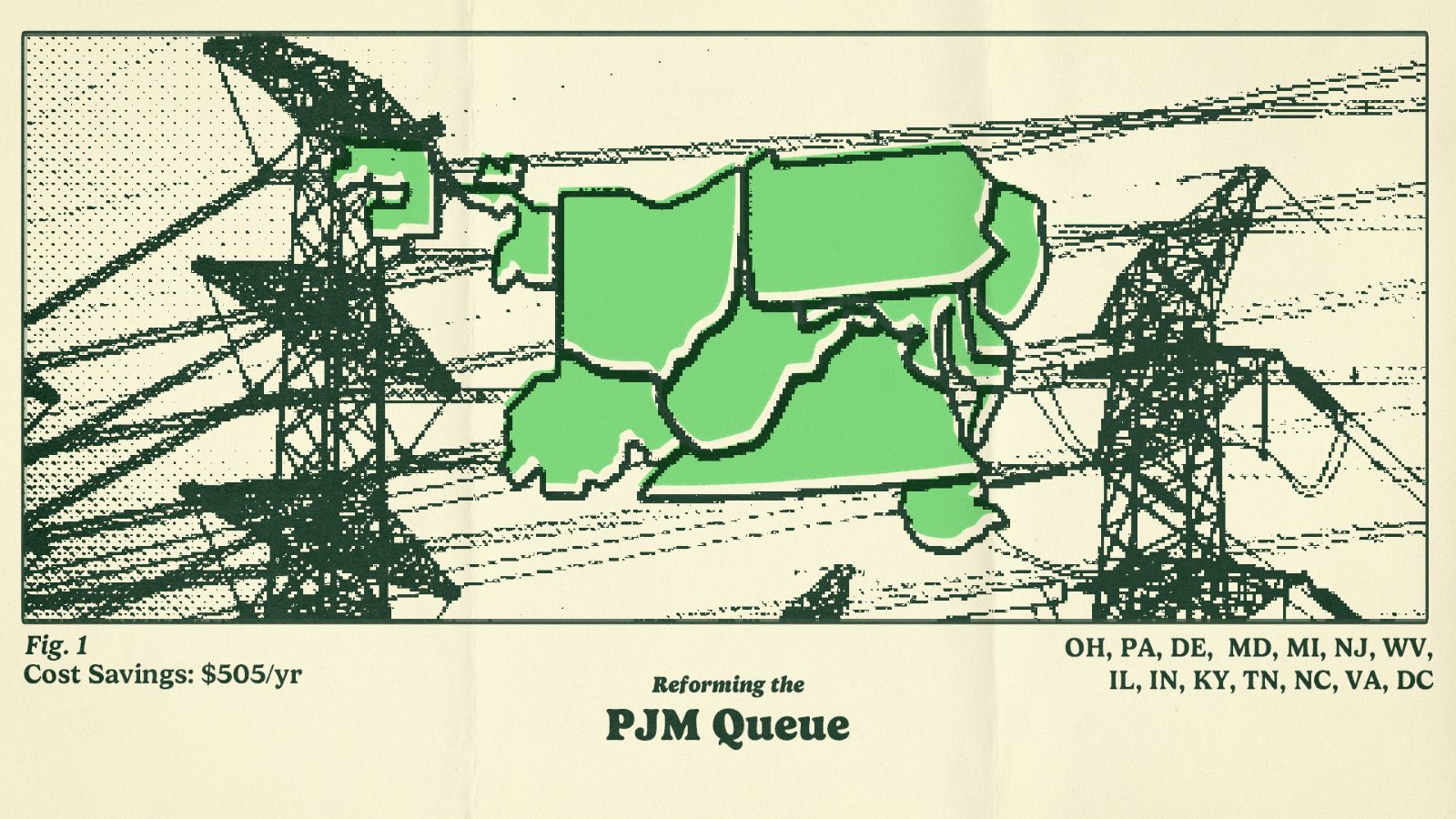Congress has thrown the electric vehicle industry into chaos by rapidly phasing out electric vehicle (EV) tax credits in July’s budget reconciliation legislation. The new law will inflict lasting harm on supply chains and manufacturing jobs and diminish clean transportation options for American families by increasing costs. In another attack on clean transportation, President Trump and Republicans in Congress are targeting California’s nation-leading vehicle emissions standards and state authority to prioritize clean air and fuel efficiency. These waivers, authorized by the Clean Air Act for decades, have allowed 17 states and the District of Columbia to follow California’s lead to enact the Advanced Clean Cars II (ACC II) and Advanced Clean Trucks (ACT) rules.
Now, Environmental Protection Agency (EPA) Administrator Lee Zeldin is going even further, leading the charge to undermine federal clean trucks and car regulations. These federal standards are critical to decarbonizing the transportation sector and meeting our climate goals. They also mitigate the significant negative health impacts of diesel-powered cars and trucks for both drivers and communities near highways.
Republicans are now working directly against their own avowed belief in states’ rights. They are also undermining nationwide economic prosperity, the vitality of our domestic manufacturing industry, and our global competitiveness, while denying people access to affordable, clean travel options.
States have the power and authority to fight back against these regressive policies and support transportation system modernization and vehicle electrification. States are stepping up. California has sued to protect its longstanding regulatory authority. Governors from 11 states have organized the Affordable Clean Cars coalition to support continued access to fuel efficiency and electric vehicles. While no single state policy can fill the enormous void left by the federal government, continued progress at the state level is both possible and essential.
7 Policies States Can Implement to Advance Affordable, Accessible, and Clean Transportation
1. Public Procurement Requirements
States require hundreds or thousands of vehicles in publicly owned fleets. Further, state fleets often have clear and repetitive driving patterns, centralized parking depots, and high mileage per vehicle. Electric vehicles with fixed charging infrastructure and low long-term maintenance costs meet the specific needs for government fleets. Governors and state Departments of Transportation and Departments of General Services can choose to prioritize purchasing electric vehicles.
Many states, like Pennsylvania, Connecticut, Illinois, Hawaii, California, Oregon, New Jersey, Washington, New York, Maryland, Maine, Massachusetts, and the District of Columbia, have made commitments to at least partially electrify publicly owned fleets. 350 mayors have made similar commitments for municipal fleets.
2. Green Bank Financing
Green banks can support electric vehicle fleet and charging infrastructure purchasing by intentionally financing clean transportation and related infrastructure. A state or city can set up a green bank to directly fund and provide financing products for electric vehicle initiatives. Green banks also optimize on opportunities to attract private capital to electric vehicle projects that have long-term cost savings but may have significant upfront costs.
California, Connecticut, Colorado, the District of Columbia, Hawaii, Illinois, Louisiana, Maine, Maryland, Massachusetts, Missouri, New York, New Jersey, Nevada, Ohio, and Rhode Island all have green banks, as do several cities and counties. Last year, New York’s Green Bank funded 400 new electric vehicles as part of the state’s ridesharing program in partnership with Revel. Building off that work, this year the New York Green Bank committed a $60 million loan to support public fast charging infrastructure. The second loan from the Green Bank was a direct response to an absence of federal funding this year.
3. State Incentive Programs for Consumers and Voucher Programs for Trucks
While states will be increasingly strapped for resources because of the draconian Medicaid cuts contained in Trump’s tax and spending legislation, states have been able to fund their own consumer incentives for passenger EVs for years, often allocating funds from Cap and Invest programs like the Regional Greenhouse Gas Initiative.
Similarly, state agencies and economic development authorities like the New Jersey Economic Development Authority and the New York State Energy Research and Development Authority can continue to administer and expand their voucher programs to cut the upfront costs of clean heavy-duty vehicles like trucks and school buses.
4. Indirect Source and Warehouse Rules
Last-mile freight delivery of e-commerce goods is becoming an increasingly large share of transportation sector emissions. Indirect source and warehouse source rules regulate air quality from a facility that aggregates mobile sources (such as a warehouse). Regulating warehouse emissions has direct benefits for underserved communities, especially Brown, Black, and Tribal communities. These communities often live near warehouses in urban settings and close to highway systems and have long been forced to breathe polluted air. Facilities can choose from a menu of options to meet their emission reduction goals. However, the easiest way for most warehouses to fulfil requirements is to support truck electrification and electric vehicle charging infrastructure.
California’s South Coast Air Quality Management District issued the model indirect source rule, the Warehouse Actions and Investments to Reduce Emissions Program (Rule 2305). The rule is promulgated under the Clean Air Act as part of California’s State Implementation Plan for the air quality non-attainment area around Los Angeles and is enforceable by EPA. The rule regulates large warehouses and requires either changes to operations and infrastructure to reduce emissions or levies a mitigation fee for warehouse facility owners and operators. This year, the New York Senate passed legislation that would have led to the adoption of an indirect source rule statewide.
5. Low-Carbon Fuel Standards
States can establish statewide markets to buy, trade, and sell credits for transportation fuel emissions. These policies set increasingly rigorous standards for producers and importers of transportation fuels statewide and take into account the life cycle emissions of each fuel type. Fuels that are more efficient than the standard generate credits (like clean electricity), while high-emission fuels produce deficits. Credits can be sold to producers and transporters that have deficits. Zero-emission vehicle infrastructure (both hydrogen and electric) also produces credits that can be purchased. This creates a market to support the expansion of zero-emission vehicle charging infrastructure.
California, New Mexico, Oregon, and Washington all have low-carbon fuel standards programs. California’s Low Carbon Fuel Standard (PDF) was enacted through its state law, the Global Warming Solutions Act. Hawaii, Illinois, Massachusetts, Michigan, Minnesota, New Jersey, New York, and Vermont have all considered enacting low-carbon fuel standards through legislation in the last few years. Importantly, California and Washington state both recently strengthened their LCFS programs to set more ambitious targets.
6. Federal Flex Funds
The federal government provides transportation dollars to states with an understanding that states know best how to develop transportation infrastructure in their particular region. Federal law permits states to flex funding allocated through certain programs funded by the Federal-Aid Highway Program to projects including electric vehicle charging infrastructure, sidewalks, protected bike lanes, and public transportation. This authority has often been used by states to move us in the wrong direction and flex funding into highway construction projects. However, under the previous two federal transportation reauthorization bills (MAP-21 and FAST), states transferred $13.3 billion from highways into transit. Funds could also be transferred to build out public electric vehicle charging infrastructure on state rights-of-way as well as electric bus charging networks.
In November 2024, Governor Shapiro exercised this authority in order to save the Southern Pennsylvania Transit Authority from a “death spiral” of fare hikes and service cuts. To do this, he worked closely with both the Federal Highway Administration and the Federal Transit Administration to send dollars originally allocated for highway use to the state’s transit funding account. New Jersey, California, Maryland, and Oregon have all transferred at least 10 percent of highway funds to transit projects under the previous two transportation reauthorizations.
7. Cap-and-Invest
Cap-and-trade, also known as cap-and-invest, is another market-based approach to cap greenhouse gas emissions. Cap-and-invest sets a limit on emissions and distributes credits through an auction that can raise significant money for states by generating credits across multiple emitting sectors like transportation, industry, and power. In the last 11 years, California has distributed $18 billion from the cap-and-invest program, which has been invested in programs that reduce emissions and improve lives. Cap-and-invest funds can be spent on new, clean infrastructure, reducing energy bills for customers, investments in electric vehicles and more. In Washington the cap-and-invest program has generated over $3 billion since it launched in 2023, and 35 percent of investments are spent in the most vulnerable communities.
California, Oregon, and Washington all have state programs that are connected to varying degrees to the Western Climate Initiative. Similarly, 10 Northeastern states are part of the Regional Greenhouse Gas Initiative (Connecticut, Delaware, Maine, Maryland, Massachusetts, New Hampshire, New Jersey, New York, Rhode Island, Vermont), which is an emissions market focused only on power generation.
New York, in particular, is considering moving forward with cap-and-invest, which could unlock a significant investment in low-carbon and lower-cost transportation options, including further electrification incentives and subsidies.
Finally, as states consider how to continue leading on vehicle electrification, they would do well to keep in mind that electrification is not the only route to meeting climate goals. Increasing public transit service and routes, building more housing near bus and train stations, and making it safer to walk and bike are also critical to reducing car dependency and transportation sector emissions.
The path ahead for reducing transportation pollution is challenging, but continued progress is possible, even as we push to reverse the terrible policies enacted at the federal level over the last several weeks. States can seize this moment to show that we can cut transportation pollution and increase affordable travel options at the same time.





